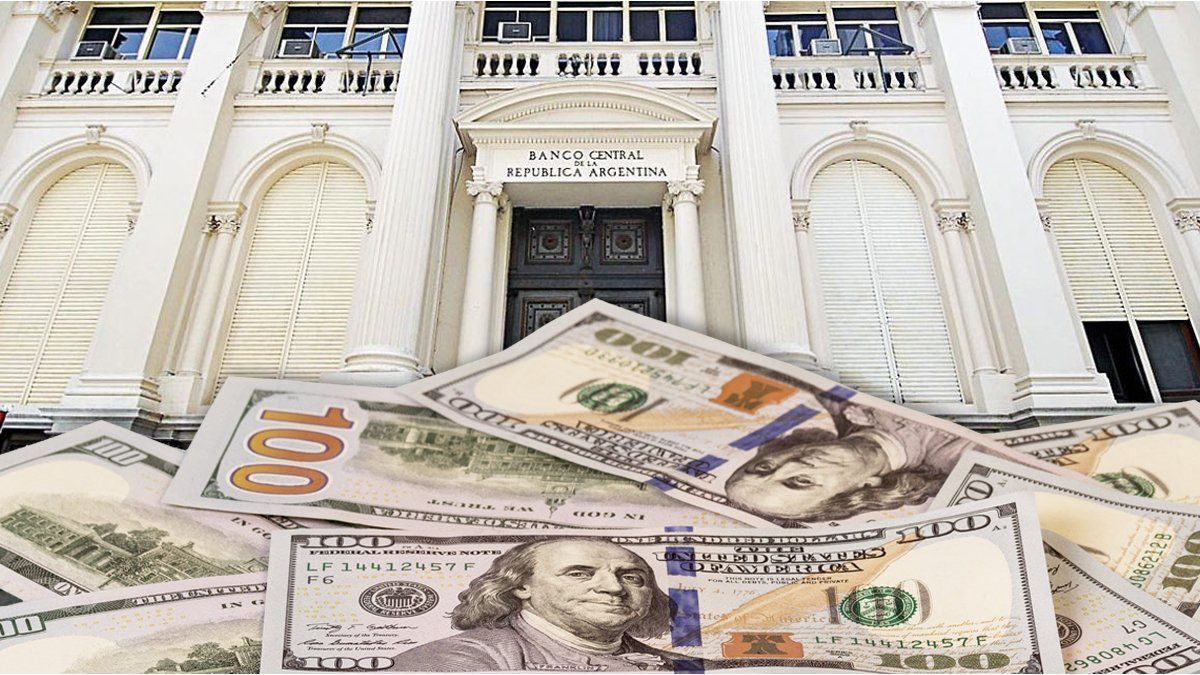Urged by the constant reservations drainage Within the framework of the strategy of stepping on the dollar to contain inflation, the Central Bank advanced in a questioned measure to prop up the only tool that allowed you to buy currencies During the last months. Decided to make macroprudential regulations more flexible that limit the granting of foreign currency loansa regulation arising from the experience of the 2001 crisis. Beyond that it is partial flexibility, the WARNINGS ON RISKS The strategy soon arrived.
This Thursday, the Board of Directors BCRA authorized banks to make any client loans in dollars: both companies and people. So far, they could only lend them to the export firms or that they had their income tied to the dollar variations.
For now, It is not a total flexibility. From the central they explained that Dolk deposits will maintain the same restriction and can only be used to finance sectors that generate dollars. Which It is enabled is for banks to use “their own dollars” (achieved through debt taking with the outside via negotiable obligations or credits) to provide any type of public, even those who have their income totally in pesos.
The issue was much discussed between City analysts and economists in recent months, based on the request of some national financial entities to advance in some type of credit in foreign currency, something that opposed the bulk of the bulk of the public banks and foreigners.
The thing is This regulation was one of the few who crossed all governments during the last 23 years. In that period, It was key to avoid banking crises Despite the multiple exchange races there were. Its origin must be traced in the 2001/2002 crisis And in the problem generated by the “barefoot of coins”: lend in dollars to those who have its income in pesos and that, therefore, it enters the risks of non -payment in the face of strong increases of the exchange rate.
Article 23 of Decree 905 of the year 2002 is still in force. That maintains the restriction on dollar deposits: financial entities can only lend them to companies that have a foreign currency flow from direct or indirectly foreign trade operations. However, The BCRA eliminated complementary standards and enabled banks to use currencies obtained through ON or credits abroad to any type of audiences: Chicas or large companies, exporters or dumping completely to the local market and even human people.
FLEXIBILIZATION OF CREDIT IN DOLLARS: The urgency of currencies
Private indebtedness in dollars was during the last months the main (and almost exclusive) support of the purchase of BCRA currencies. It is that this financing is liquidated in the official change market and inflates the supply of dollars, in a context in which the demand is restricted by the stocks.
The impulse of credit in foreign currency was the tool to which the economic team appealed to stretch the life of an exchange appreciation scheme that incubates macro imbalances. The ceiling to boost local bank loans in dollars to the private sector was provided by the money launderingwhich triggered the level of deposits in foreign currency.
Although That stock is not eternal. And while he continued to contribute currency flow to the official market, in recent weeks The growth rate had begun to love a bit. Also, the constant Sangria on droppers of deposits in dollars It does not stop.
In addition, the exchange tab of Luis Caputo and Santiago Bausili (and its counterchamber, the increase in Argentina in dollars) triggered the Currency output by tourism. And combined with the import opening, it made it in January The commercial surplus collapses to the minimum level of the Milei era (barely US $ 142 million).
That is what the continuity of the “Blend dollar”which makes 20% of exports do not enter reserves; The strong direct intervention on financial dollars (Although the “blend” is still valid), which exceeded US $1 billion in recent weeks, according to private calculations; and the External debt payments.
The consequence: Since January 7, gross reserves lost US $ 4,500 million Although the central bought more than US $ 2,000 million in the official market. Net reserves are still negative in more than US $ 9,000 million, if measured with the methodology of the International Monetary Fund. Is In that contextand while negotiating new indebtedness with the IMF, which The economic team radicalizes its commitment to stimulate credit in dollars.
The risks
The truth is that The measure already ignited yellow lightsalthough flexibility is not total. Economists and analysts of the financial entities themselves gave an account of the risks of advancing in this regard.
In dialogue with Scopethe financial analyst Christian Bueterer He pointed out that The premise of the economic team to separate the deposits of the risk savers which implies lending them in foreign currency to those who have their income in pesos. “Anyway, That is very debatable because money is fungible: Once you enter to know which money is here and what money is there is not so simple, ”he warned. And he added that the measure could be a first step for broader flexibility: “I think the idea is to go to a system where everyone can be provided.”
In that sense, An outstanding economist from a financial entitywho preferred the off the record, told this media that, a priori, they appear Two risks. On the one hand, the aforementioned barefoot of coinsalthough it is still limited as a result of the fact that flexibility is partial and that there were already exporting companies that borrowed in dollars via on.
On the other hand, he considered that another risk is than the measure respond more to the urgency of obtaining dollars than to the official macroeconomic deregulation program and that, therefore, “Be the first step of several.”
Jorge Carreraformer vice president of the BCRA, said There is a higher risk for the system from this measure. Although there is a clear differentiation in which the risk will not be associated with deposits but to financing obtained by the banks themselves, career considered that in practice the thing is different and it is not easy to separate them as stagnant compartments.
In dialogue with this media, he said: “At the time there is a banking crisis, for the bank everything becomes much more complicated. And it is possible that it is not so easy to delimit one thing of another if the bank has problems collecting the dollars in dollars that gave other sectors (non -exporters). ” In those cases, There are infection possibilities to the entire balance sheet From the entities, he warned.
The economist explained that one of the problems is that the stimulus to the banks to be straightened to accelerate the loans in dollars to the private sector reinforces exchange appreciationwhich incubates the possibility of a more abrupt correction of the exchange rate. While the appreciation lasts, for the banks it looks simple to lend in dollars to human people or companies not generating currencies; but If a devaluation jump occurs, the default can be shot and, eventually, an exit of preventive deposits. “It is there when exchange crises derive in a more expensive and traumatic phase that are banking crises,” added career in his X account.
In your dialogue with Scopethe former monetary authority official added a example recent to weigh the risks: “The Grobo and the other companies that had non -payments are from the sector by definition more generator of dollars In the Argentine economy (agriculture) and, nevertheless, they are in trouble and generated problems to the banks that had lent them. Now that can be further enhanced because they are going to lend sectors that have not directly hooked their income with the variations of the dollar. ”
Source: Ambito
I am a 24-year-old writer and journalist who has been working in the news industry for the past two years. I write primarily about market news, so if you’re looking for insights into what’s going on in the stock market or economic indicators, you’ve come to the right place. I also dabble in writing articles on lifestyle trends and pop culture news.




